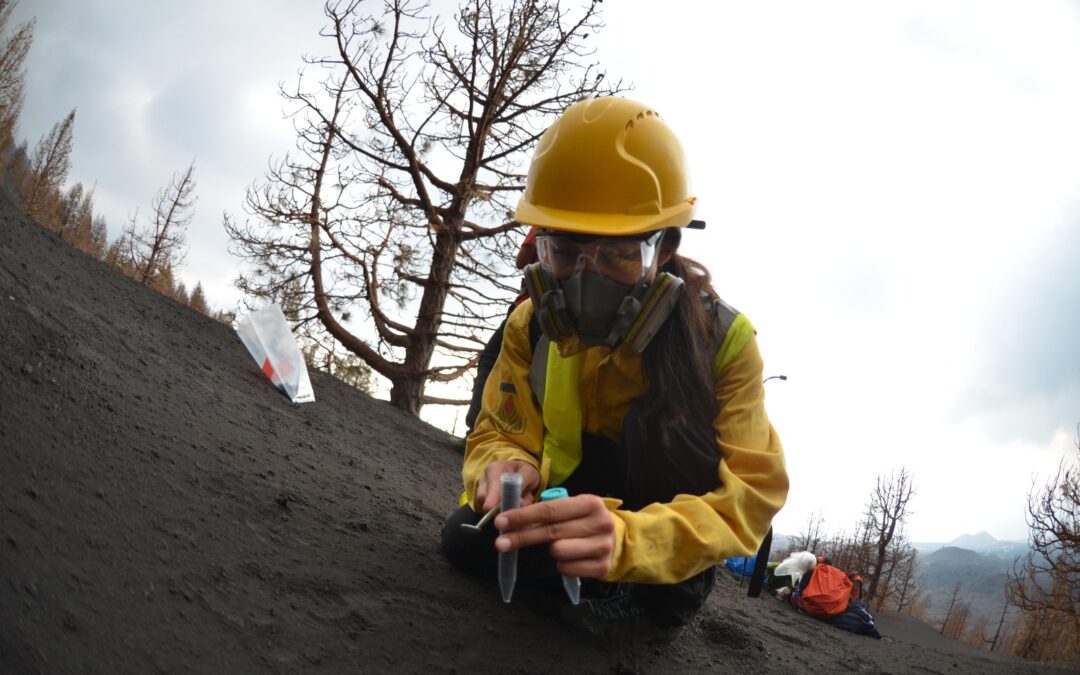This interview was recorded at the beginning of October 2021, two weeks into the ongoing ‘Cumbre Vieja’ volcano eruption on the Spanish island of La Palma*. We had a chance to talk to one of the field geologists, Maria Jiménez Mejías, who were present on-site at the time. We asked her a few questions related to her profession and the actual work she was carrying out at the moment.

Photo: Maria Jimenez Mejias (age 30), geologist from Tenerife
How did you become a geologist? What made you choose this profession?
Honestly, at the time when I was looking for university degree options, I did not know, which path to chose, I was sure that I wanted to do a science degree but I had many doubts about it. Then, I found a geology degree option, it seemed to me so interesting that I decided to do it, and it is the best choice I have ever made 🙂
What is the most interesting part of your job? What do you enjoy the most?
In my opinion, the most interesting part of my job as a geologist is studying the potential storage and ascent mechanism of magmas, their degassing paths and the interpretation of precursory signals – mainly linked to volatile/gas exsolution – gases that we are able to measure up in the surface. Moreover, studying past eruptions and how volcanoes behaved is crucial in order to understand how they might behave in the present, which is fundamental to provide data to help manage volcanic emergencies as it is the case right now.

Sampling pyroclastic material during the La Palma eruption.
Did you have a role model, did you know any geologists among family or friends or a scientist?
In fact, the moment I chose to apply for the geology degree I did not know any geologists but it is true that my parents studied science degrees like biology and astrophysics. Yet, I was not sure to choose the same degrees; then I found geology and it was amazing for me, but I had to explain to my parents what it is about and what geologists do. Nevertheless, I think that the most important role models were my parents and their advice “No matter what you do as long as you thrive and you do it with enthusiasm and motivation” played an important part in my career choice.

Lava flows on La Palma.
Why this current eruption in La Palma is special?
I think this eruption is very special because it is the first sub-areal historical eruption in the Canary Islands that is fully monitored, as the last one that occurred near the island of El Hierro in the autumn of 2011 was a sub-marine eruption so it was different in many ways. All while, the last sub-surface eruption was the Teneguia eruption (also occurred in La Palma) in 1971 but the technology and monitoring network was very-very different/poor at the time, so here we have a unique opportunity to better understand and improve our knowledge on volcanic processes.
* The eruption started on the 19th of September 2021 and was declared to be ended on the 13th of December 2021.
Interviewer: Adrienn Cseko, LPRC
This article has been published in the February 2022 edition of the ENGIE Magazine.


